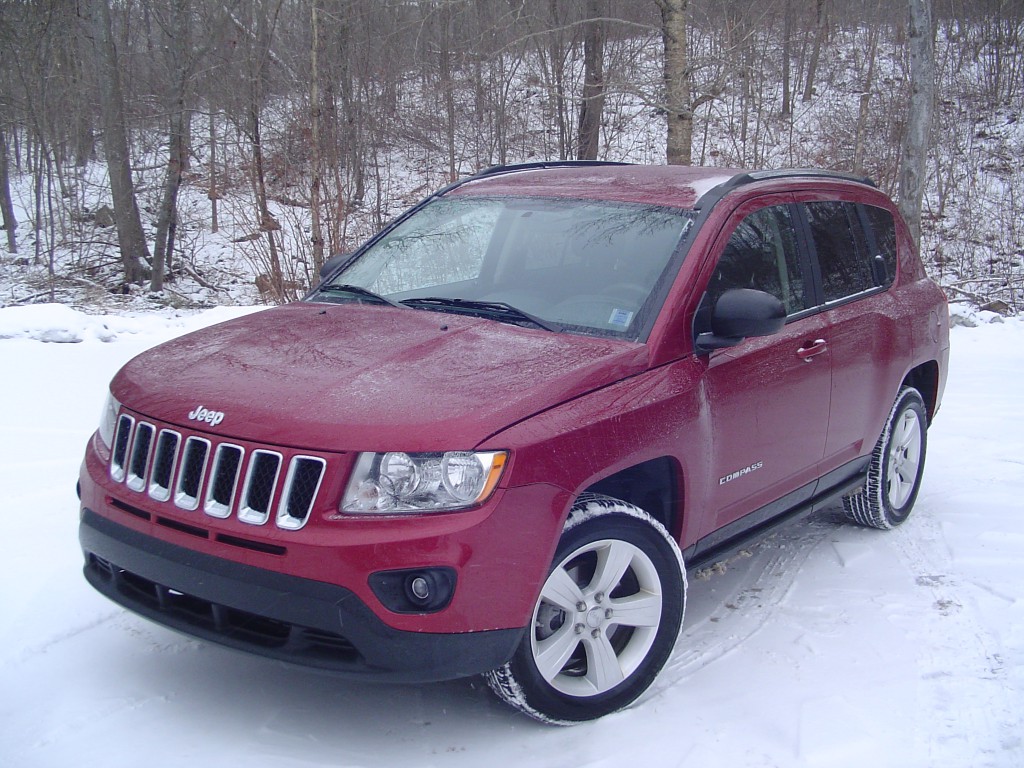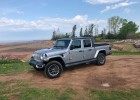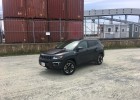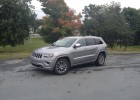By Kevin Harrison
I have a friend who, traditionally an import fan, has recently become infatuated with a Jeep. He actually has become so enamoured that he’s seriously considering purchasing one to replace his Honda Civic Si and has even been to several dealers in search of the perfectly spec’d (for him) model.
The Jeep he’s interested in is of course the Wrangler and who could really blame him? The Wrangler is the epitome of the Jeep brand: rugged-testosterone laden looks, amazing off-road capabilities to match, now more spacious with a 4-door option, more refined with the new Pentastar V6 and upgraded interior and, as per domestic manufacturer tradition, lots of enticing purchase incentives.
The Wrangler isn’t the only model getting much needed attention from Chrysler. The new Grand Cherokee is an impressive vehicle to be sure, as I noted in a review last year. It’s much more refined, much better looking and, perhaps most importantly, better on gas.
Now Jeep has turned their sights to a new model. The Compass has long been criticized for being blasphemous to the Jeep brand as it is essentially a tarted up version of the ridiculous Dodge Caliber, only somehow made uglier. Any vehicle to wear the Jeep nameplate needs to be a capable off-road vehicle (or ‘trail rated’ in Jeep lingo) and the Compass just wasn’t. Perhaps the biggest offense to the sacred Jeep name was that the Compass was front-wheel drive only.
With this new redesign, Jeep is hoping to change all negative attitudes about the Compass. Have they succeeded?
The redesign gets rid of the classic circular shaped headlights and styrofoam looking cornered signal lights in favour of a look akin to that of the Grand Cherokee, which isn’t necessarily a bad thing. The Grand Cherokee is a handsome vehicle. But while the new facia definitely is an improvement over the previous generation Compass, the overall awkward shape remains as the side profile exudes a sort of Caliber-esque look. The Compass further does not help to differentiate itself as those alloys are identical to those of the 2011 Caliber. The only difference is the Jeep centre caps. The rear look is fairly similar to the old model although the new Compass gains slightly redesigned tail lights featuring LED’s.
Inside the story is much better as the fit and finish is much improved as is the overall layout. Controls are generally easy to reach, although the flimsiness of the turn signal stock is quite out of place. The ‘Compass North’ trim of my tester (which is a Canada-only option) added a leather wrapped steering wheel with audio controls. The controls on the centre stack are big and easy to use with a gloved hand which almost makes a few of the hard plastics excusable. Rear legroom isn’t exactly Maybach-like, however it is adequate. The rear seats fold flat for a large cargo area allowing for about an 8 foot long space.
The Compass is powered by a 2.4 litre inline-four which makes 172 horsepower and 168 pound foot torque. I should note at this point, that this engine is exclusively for models equipped with 4X4. Yes, the Compass now has 4X4, although as mentioned, it is optional. If you opt for a front-wheel drive version you will get the 2.0 litre four. Both engines are mated to a CVT transmission which is probably about as good as Nicolas Cage at acting. It’s very unrefined, jolty, noisy and frustrating. When on the highway in cruise control, the transmission seems to become schizophrenic as it can’t decide whether it should be downshifting or up-shifting when really, the gear it was currently in was the right one. When encountering an incline, the engine acts like it’s ran out of juice as it starts puttering and coughing trying to make it up the hill. To make the CVT seem even more pointless is the disappointing fuel efficiency I returned. I averaged about 12.8 L/100 kms in both city and highway with the latter being a bit more than the former. That’s not great considering that a) the official ratings for the Compass come in at 9.9 city and 7.5 highway and b) the whole purpose of a CVT transmission is to help save fuel.
Under hard acceleration it was almost like the 2.4 was begging for mercy. Bogged down by the 4X4 system, the Compass certainly does not feel fast, so don’t embarrass yourself by trying to beat someone to the lights. Perhaps the only savings grace is that the brakes are pretty good with decent stopping distances.
As the Compass’ ride height is higher than the Caliber, handling isn’t exactly its forte, however it does still feel relatively planted when compared to its bigger siblings in the line-up. As mentioned, the Compass has 4X4 using ‘Freedom Drive’ which is one of nine 4X4 systems used by Jeep. Basically under normal driving conditions the system puts power to the front-wheels only until the rear wheels are needed. It will then send torque to the rear wheels automatically. However the 4×4 system can be locked into a complete power split (50/50). When this is engaged the system also has a hill decent feature as well as low-range availability. This is how the Compass is able to wear the well-respected ‘trail rated’ badge. While in 4×4 lock mode, the Compass does not disappoint in the snow. I am confident that, while it would likely be defeated by hardcore off-road courses, it could still hold its own in light to moderate off-road challenges.
So there is no question that this version of the Compass is more worthy of the Jeep badge, however it’s far from perfect. The styling is still awkward, the engine and transmission pairing is terrible and fuel efficiency is dreadful (although it could be argued that that is actually a Jeep characteristic).
It is much improved over the old model but still seems to dip its toes in both the good and bad side of the lake. I seriously doubt it will convert any hardcore Wrangler owners and it certainly wouldn’t get a second glace from my friend with the newly found Jeep desire. Jeep aficionados still probably hate the Compass to its core. However, as an every day city vehicle, the Compass is easier to drive and cheaper than any other model in the line-up. And that’s really who this vehicle is for: people who wants an urban dweller that promises a false sense of indestructibility. In essence, this is Jeep’s model which helps to usher people into the brand. And once they have them, they’ll surely upgrade to a model that isn’t quite as noisy, unrefined or ridiculous looking. At least, here’s hoping.
Base Price: $17,245
Pros:
- Improved styling
- Improved, logically laid out interior
- More credible 4X4 system
- Good cargo room
Cons:
- Still noticeable Caliber styling cues
- Poor engine/transmission pairing
- Slow
- Fuel efficiency isn’t great
Overall: 5/10













